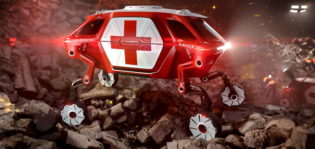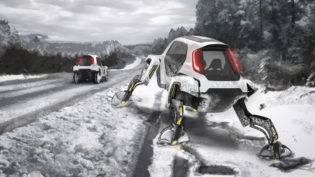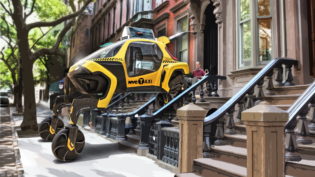“What happens if you combine a car and a robot?” asked John Suh, Hyundai’s founding director of the company’s recently announced New Horizons Studio based in Silicon Valley. To many, the answer is easy: Transformers!
I have a new contact at Autodesk who recently shared a company blog post by Kimberley Losey telling the story of some cool concept cars from Hyundai. Designers are using generative design from Autodesk Fusion 360 to bring concepts to life. Check out the entire post. I’ll include some highlights.
What is generative design?

Generative design is a design exploration process. Designers or engineers input design goals into the generative design software, along with parameters such as performance or spatial requirements, materials, manufacturing methods, and cost constraints. The software explores all the possible permutations of a solution, quickly generating design alternatives. It tests and learns from each iteration what works and what doesn’t.

A unique mobility solution–something that drives and walks–presents immensely difficult design and engineering challenges. One of the most common amongst these is a never-ending quest in the transportation industry: create components that are lighter, but stronger, than past generations of similar components. Designers and engineers tasked with these “lightweighting” challenges frequently look to futuristic materials such as metallic foams, carbon fiber and new metal alloys, along with modern design techniques such as generative design, for solutions. These are areas where Autodesk’s tools and expertise excel, so Hyundai turned to Autodesk for input.
Hyundai’s New Horizons Studio believes that the combination of driven wheels and powered legs will result in ground vehicles with unprecedented locomotion capabilities. The studio aims to contribute to Hyundai Motor Group’s core automotive business as it seeks to expand into new markets that enhance transportation on and off the road.

“What could a car achieve if it had the ability to walk?” continued Suh’s thinking, which ultimately resulted in the walking “Elevate” concept that Hyundai developed in collaboration with storied industrial design studio Sundberg-Ferar and debuted at CES 2019. Called the ultimate mobility vehicle (or “UMV”), Elevate has the ability to transform from a four-wheeled, car-like vehicle into a four-legged, reptilian walking machine, giving it the ability to traverse terrain that’s inaccessible to even the most capable off-road vehicles. When originally debuted, it was heralded for its ability to climb walls, cross diverse terrains and approach barriers, all while keeping its body and passengers completely level.
Uses for such a vehicle include irregular-ground transport needs, surface exploration, search and rescue emergencies, and clearing the significant transportation hurdles some mobility-impaired individuals face daily.
Generative design seeks to streamline and accelerate the process of developing design ideas and getting to production. In the time a designer can create one idea, a computer can generate thousands, within the constraints provided by the designer, and present those numerous design options with the trade-offs of strength, weight, cost, manufacturing complexity and sustainability clearly illustrated early in the process. Autodesk’s tools provide options through which designers and engineers may tap the near-limitless compute power of the cloud to reduce their mundane, repetitive analysis work, freeing up their time to focus on creativity and innovation.
Creating tools for modern teams of this nature, leveraging the cloud and a common data platform to ensure everyone’s on the same virtual page: this has been the focus of Autodesk’s Fusion 360 platform since its inception more than seven years ago. Teams can explore how to save time, remove frustration and maintain details of a project from start to finish when file sharing is seamless and everyone’s speaking a common design, engineering and manufacturing language.





